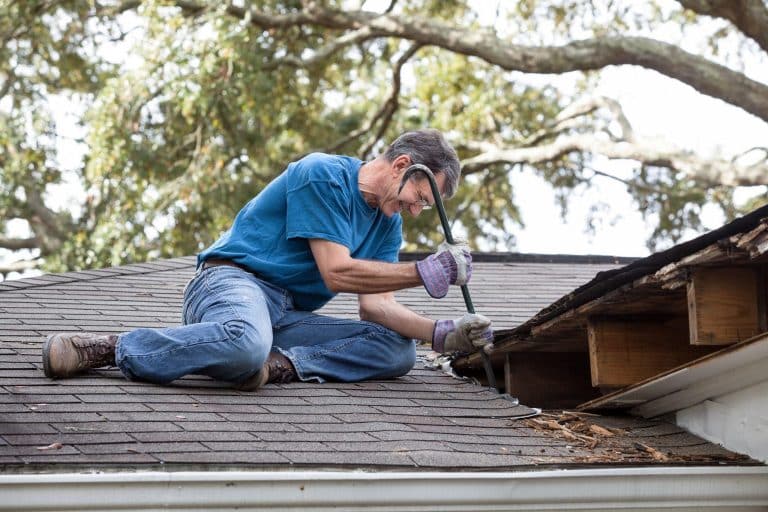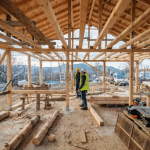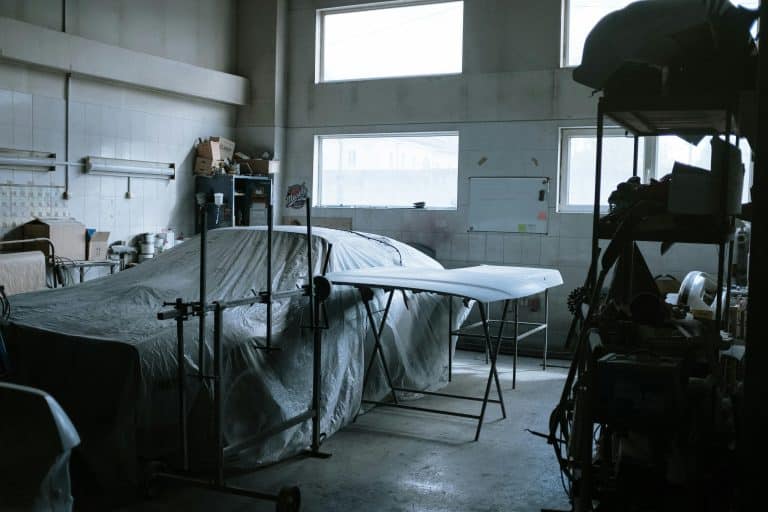Maintaining a house’s structural integrity and longevity greatly depends on regular roof inspections. A timely check on your roof can serve as a preventive measure, identifying and curbing emerging problems. Ignorance or negligence can turn minor issues into substantial damage, bearing significant consequences. These can range from costly repairs to the house’s devaluation or structural disruption. On the flip side, comprehending and acting upon early signs of roof damage can lead to substantial savings in terms of precious time and hard-earned money.
This article focuses on helping you recognise the signs of roof damage, comprehend their implications, and determine the necessary course of action. These signs range from water stains to missing shingles, and understanding these markers is the first step in maintaining a secure and well-intact house.
Water Stains and Leaks
Water stains and leaks are among the most potent signs of potential roof damage, which might indicate intrusive moisture. These seemingly minor problems can compound into severe structural damage if left unnoticed. Water stains typically manifest as patches or blotches with discolouration, usually brown or yellow, often on ceilings and walls. These stains are the first indicator that water penetrates the roof’s barriers and seeps into your home.
Familiar places to check for these stains include the attic, which typically bears the earliest signs of leaks, around chimneys, skylights, and vents. These areas are the most vulnerable to water infiltration since they are architectural interruptions in the roofline, making them more likely for leaks to develop. One may find peeling paint or warped wood in the exterior as signs of water penetration.
Unattended leaks can lead to severe structural damage, deteriorating the building materials over time. The deteriorated materials compromise their strength, reducing their load-bearing capacity and interrupting the structural integrity of your home. Additionally, the excess moisture can promote the growth of mould and mildew, negatively affecting your home’s indoor air quality and posing potential health risks for the inhabitants.
Upon spotting water stains, it is critical to take swift action and trace the source of the leak. This could involve inspecting the roof from the outside or checking the attic, where leaks are most likely to occur. Immediate intervention by professional roofers is recommended to seal any gaps or repair damaged portions, thereby preventing further leakage.
Damaged or Missing Shingles
The roof shingles are the home’s first defence against the weathering elements. They safeguard your house against rain, wind, and the harsh Australian sun. Changes in weather, including severe storms, high winds, and temperature fluctuations, can harm a roof’s shingles, causing wear and tear over time.
Look out for cracked, curling, or blistering shingles—these are signs that your roof’s defence is not as robust as it needs to be. If shingles are missing, immediate attention is required, as the bare roof underlayer is now exposed directly to different weather elements. This increases the likelihood of water infiltration, further causing potential damage to the roof. Apart from the functional aspect, missing shingles can also affect the overall aesthetics of your home and can potentially decrease its market value.
Assessing shingle health from the ground level can be done with binoculars. Pay attention to any misplaced or discoloured shingles. Also, look for areas where shingles appear differently from the rest, indicating possible damage. The ground around your house shouldn’t be ignored; look for shingles’ pieces or granules that signal deterioration.
Sagging Roof Deck
A sagging roof is a serious issue that, if overlooked, can have far-reaching implications for your home’s overall structure and safety. Various factors can contribute to a sagging roof deck, including water accumulation, improper construction, accumulated debris, and prolonged exposure to heavy loads.
Early warning signs of a sagging roof include inconsistent roofing lines and ceilings developing an interior crack. Shifts in the structure can also affect the opening and closing of doors and windows.
Such structural shifts due to a sagging roof can weaken the roof’s ability to sustain its weight, making it more vulnerable to partial collapse. This could pose a significant safety hazard for the residents. As serious as it may seem, this issue also equates to the possibility of a financial drain due to costly repairs necessary to fix such a condition.
Professional inspections are highly recommended as a preventive measure against such damage. Experts can effectively assess the state of the roof deck, pinpoint problems, and provide requisite solutions to stabilise the structure.
Gutter Blockages and Granule Loss
Blocked gutters can serve as red alerts for underlying roof issues. When gutters become clogged, the accumulated water can seep back into the roof structure, causing water damage. The weight of accumulated debris can also pull the gutters away, thus disrupting the roof’s fascia boards.
On the other hand, granules found on shingles help protect the roof from sun damage, providing an extra layer of fire resistance. Therefore, if granule accumulation is noticed in the gutters, it could be symptomatic of shingle wear. While it is normal for granules to come off over time, a large accumulation could indicate that the shingles are nearing their functional lifespan.
Regular gutter maintenance is critical to prevent these potential issues. Cleaning gutters at least twice a year is beneficial in ensuring proper water flow and preventing seepage into the structure. Additionally, installing gutter guards is a smart move in preventing debris buildup. Monitoring granule falls will also give insights into the health of your shingles and the urgency of their replacement.
Roof Flashing Damage
Flashings provide crucial protection to the roof’s integrity. Located around critical areas like chimneys, vent pipes, and skylights, flashing helps direct water away from these areas, thereby preventing water infiltration. Any incurred damage to the thin metal material can significantly affect its functionality and compromise its protective role.
Joints and seams, where different roof components meet, are common areas for flashing wear and tear. Damage such as cracks or corrosion can let water seep underneath, leading to potential structural damage.
Signs indicating the need for flashing repair or replacement include visible rust, cracks, or loose pieces. Any irregularities need immediate repair to prevent water from breaching the roof’s protective barrier.
Opting to ignore flashing issues can have drastic ramifications. Water infiltration may lead to rot and decay, compromising the home’s structural integrity. Addressing flashing issues promptly will enhance your roof’s lifespan and prevent costly repairs.
Conclusion
Early roof damage detection is crucial in preserving your home’s safety and value. Regular monitoring or professional inspections can help identify issues at their budding stage before they balloon into full-blown problems. Timely address of minor issues is cost-efficient and prevents the likelihood of significant disruptions.
Homeowners are encouraged to utilise routine inspections and take advice from roofing experts, ensuring their home’s roof remains in excellent condition. This will keep your property intact, shielded from damage, and provide peace of mind, knowing that your home is secure in its defences against Australia’s varied and unpredictable weather conditions. From understanding the implications of different types of roof damage to taking preventative actions, the homeowner’s role is pivotal in keeping significant problems at bay. Scheduling regular checks— be it DIY or professional— is the first step towards a well-maintained, strong and safe home.










